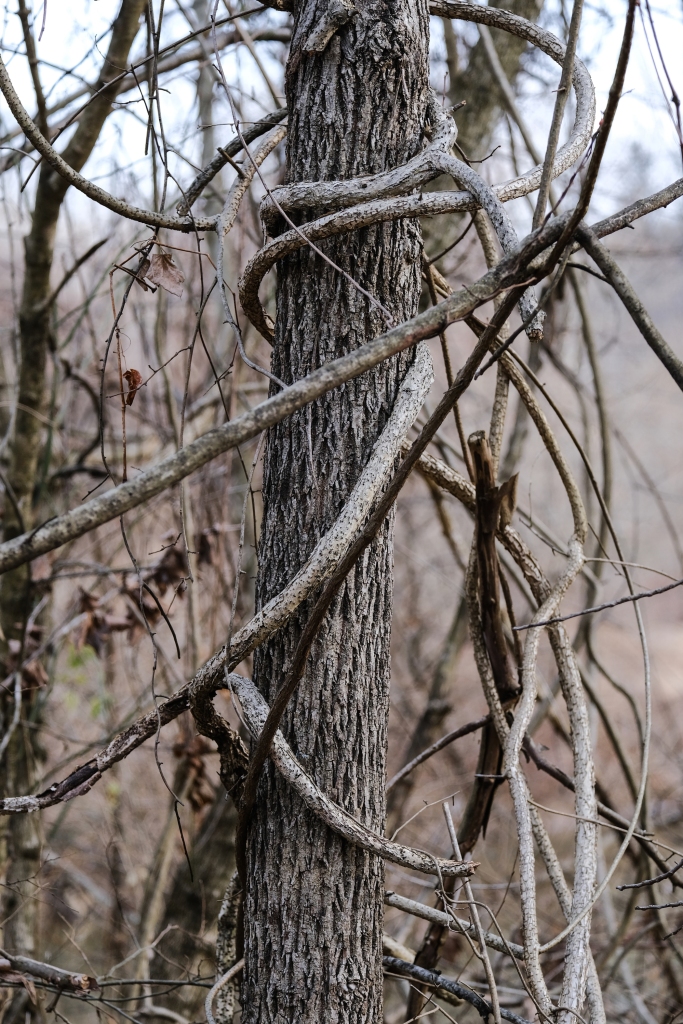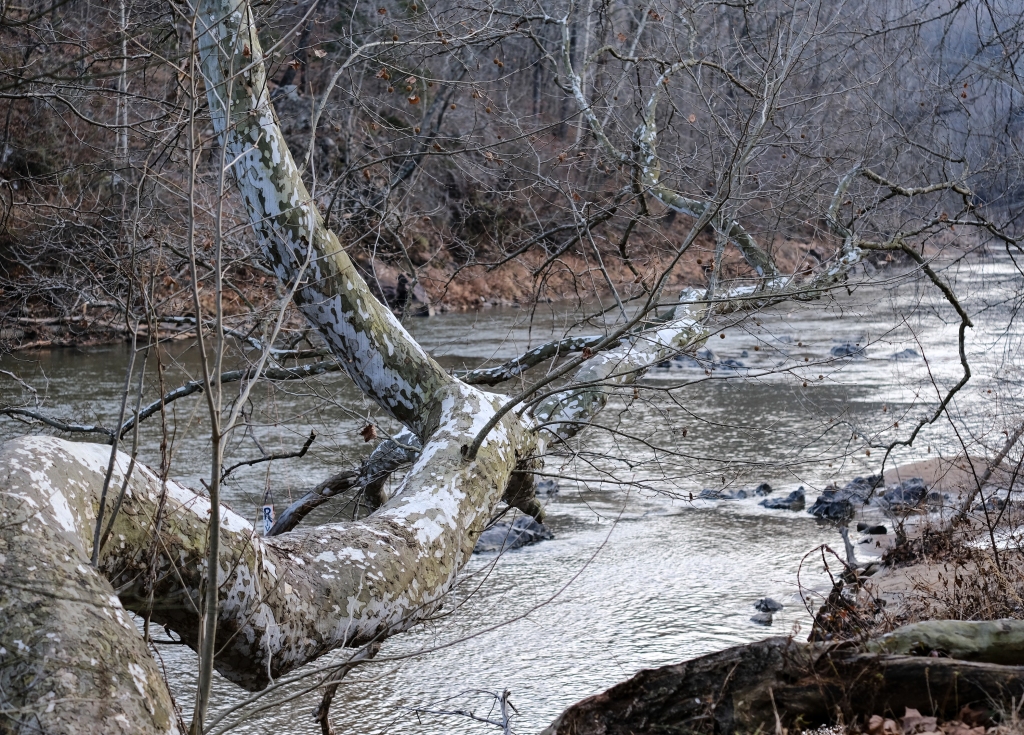
Since September, I’ve been taking photo walks on a trail that runs alongside a river. I walk about five times a week, on the same path and for about the same distance (2.5 miles in total). Not surprisingly, I find myself returning to the same photographic ideas, sometimes with different combinations of camera and lens, always because the light reveals more detail as the sun’s angle drops, or because the colors soften as the leaves wither and fall off the trees. The woods and river are constantly changing, and my images examine those gradual daily changes.

I should be walking faster with an eye toward exercise, but instead my eye slows me down every time I have the impulse to make a picture. Often the process amounts to target practice, and the pictures are just additions to the burgeoning compost pile of my Lightroom catalog, but sometimes the impulse pays off. I don’t consider myself to be a landscape photographer or a nature photographer, but nevertheless I find myself out there almost every day, taking pictures of this particular landscape and the specific plants and creatures that live there. I’m learning from it, and I’m noticing more. Water is especially challenging to photograph: do you focus on the reflection, on the surface, or on what’s submerged beneath it? The rocks and trees have beautiful forms and textures, but most of my images only consider one or the other, not both at the same time. Maybe, over time, a direction will emerge. In the meantime, I walk with my camera.

The cameras I use are small, mirrorless Fujifilms. It’s ridiculous, but I have three now. The first one I got was an X-E2, a small rangefinder that I keep equipped with an old Leica 35mm lens. It’s easy to carry, and I love the optics (if not always the manual focus) of the lens. When I realized how much I loved working with this format, I got an X-Pro2. It reminds me of my old Leica rangefinder, and it’s usually paired with a 23mm f/2 Fuji lens. It’s fast and fun to shoot with, but despite the ergonomics and fantastic autofocus, it’s turning out not to be my favorite for the trail. To my surprise, that honor ends up going to my newest Fuji, an X-T3 (new this past summer) that works spectacularly with my two zoom lenses. I know the “correct” philosophy is to prefer prime lenses, but I love carrying a zoom on my walks, as it gives me more flexibility and lets me avoid changing lenses outdoors (mirrorless sensors are exposed to the elements when you remove the lens). I keep a set of nice-quality closeup filters in my bag when I use the shorter (18-55) zoom, but I really love the foreshortening and subject isolation provided by the longer (55-200) zoom, as well as having that extra reach when the park’s resident heron shows up in the river on a sunny day. I’d like to say I have a strict routine or a disciplined method of choosing which camera/lens combination to bring, but really it depends on the time of day, the weather, and what I feel like playing with that day. I shoot JPEG files and have settled on using primarily the “classic chrome” film simulation with all three bodies, giving the pictures a more consistent look and saving me hours of tedious editing. Like many Fujifilm converts, I’ve found that this approach really feels more like shooting film and has put the fun back into making color pictures.

The last few weeks have been difficult, and I’ve been preoccupied with thoughts of loss and change. It’s been strengthening to get out into the sun and cold air. Today, on the solstice, it seemed especially important to share some pictures in recognition of the arrival of true winter and the start of a gradual return to longer days. The light was soft and beautiful as I began my walk, and I spotted (though didn’t photograph) a red fox climbing the bank across the river from me. I felt so lucky to be here with my eyes wide open at the turning of the year.







You must be logged in to post a comment.